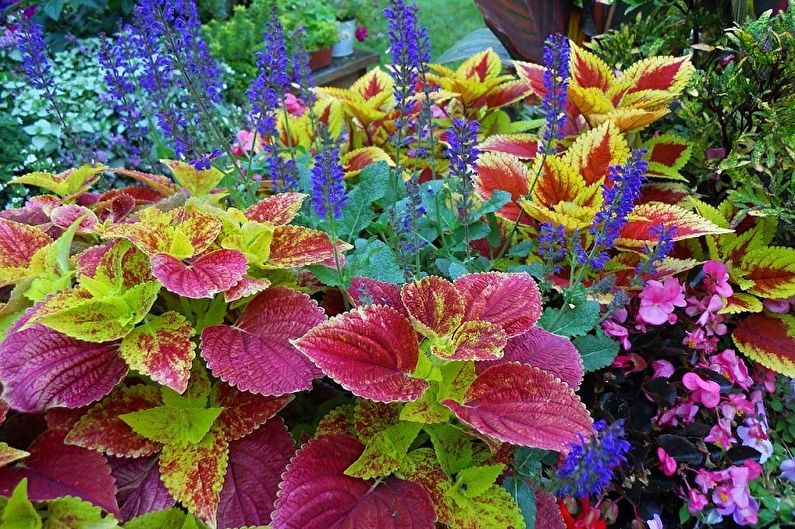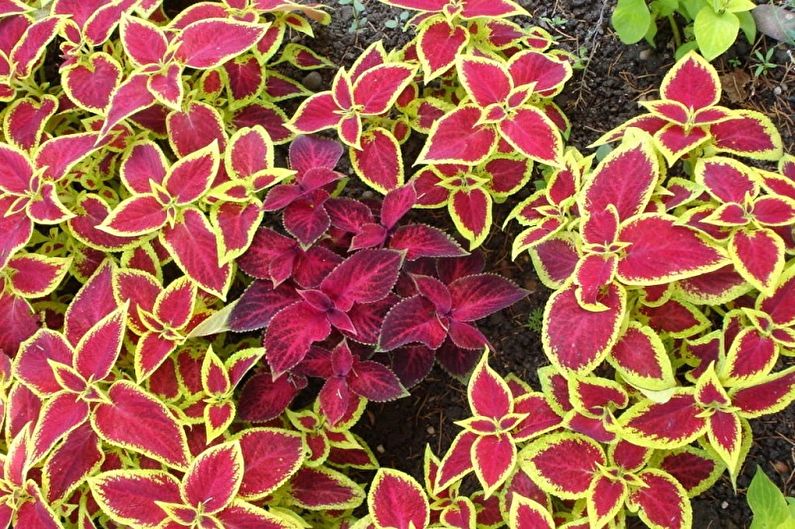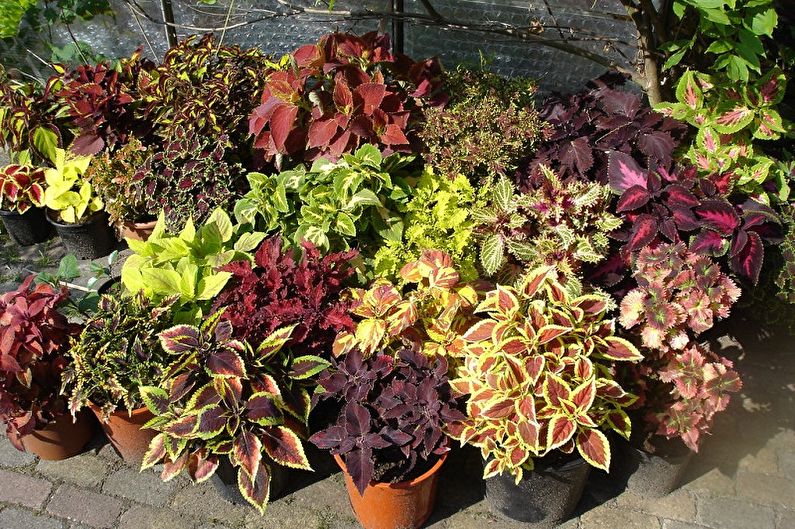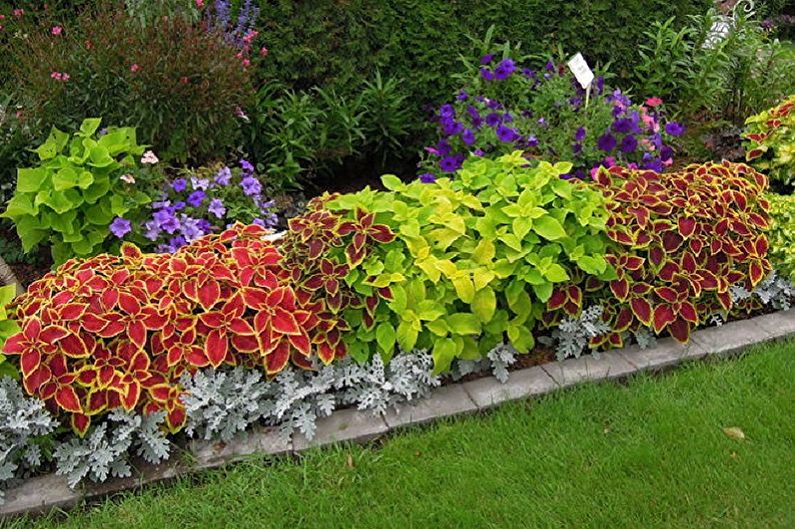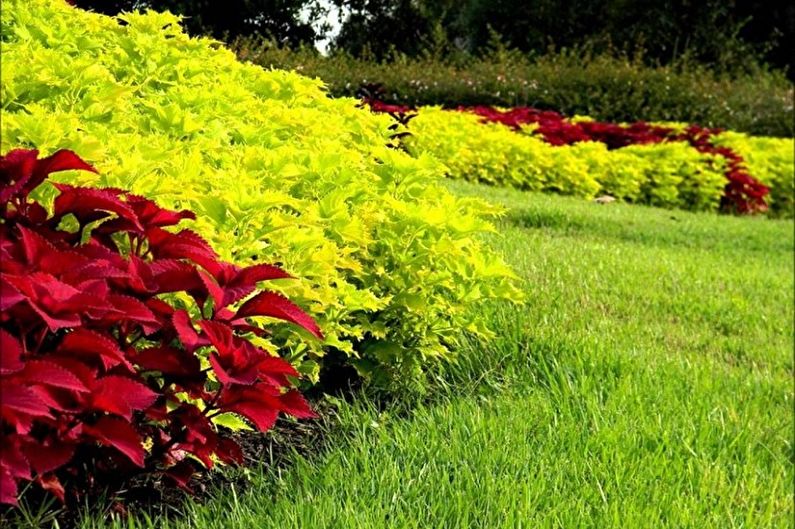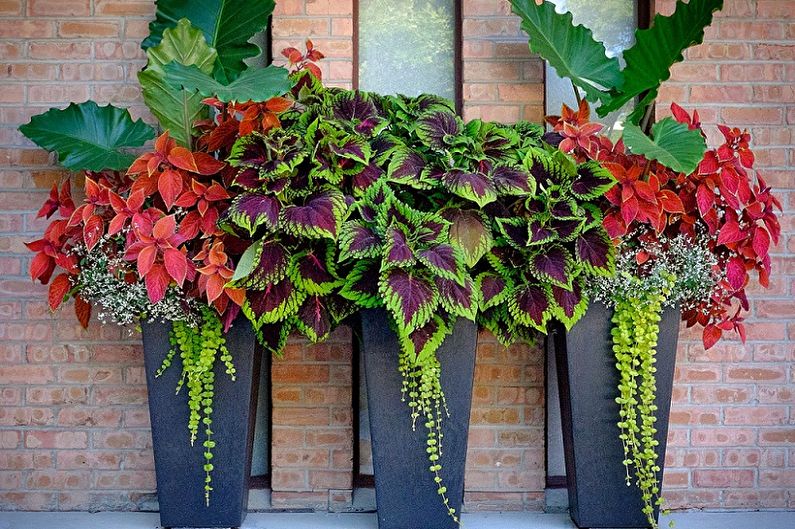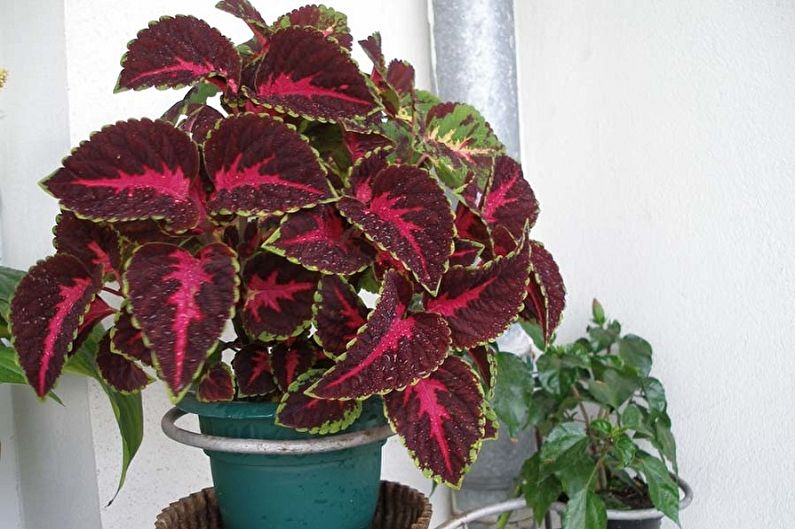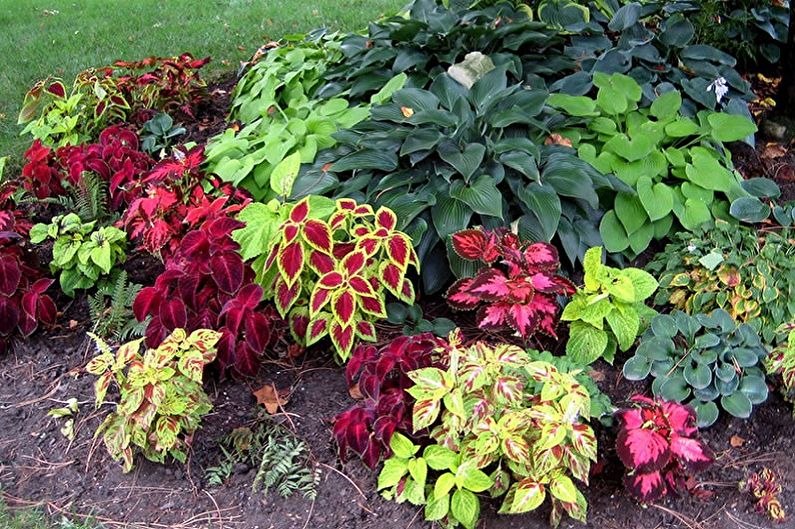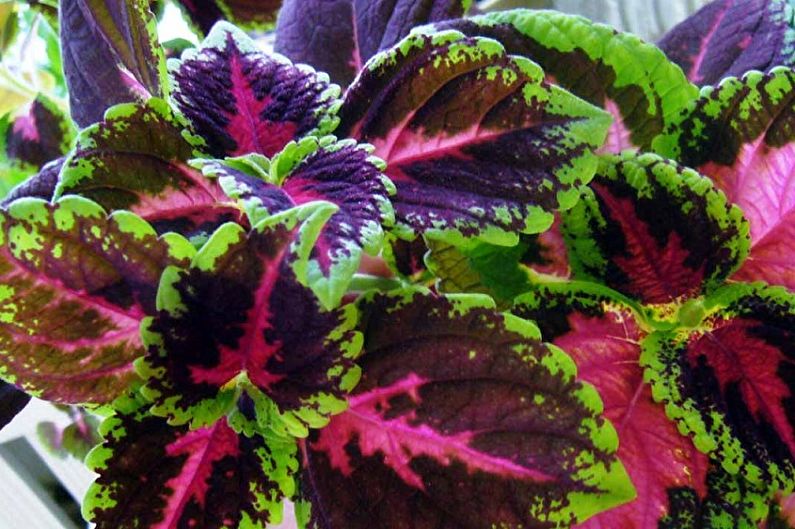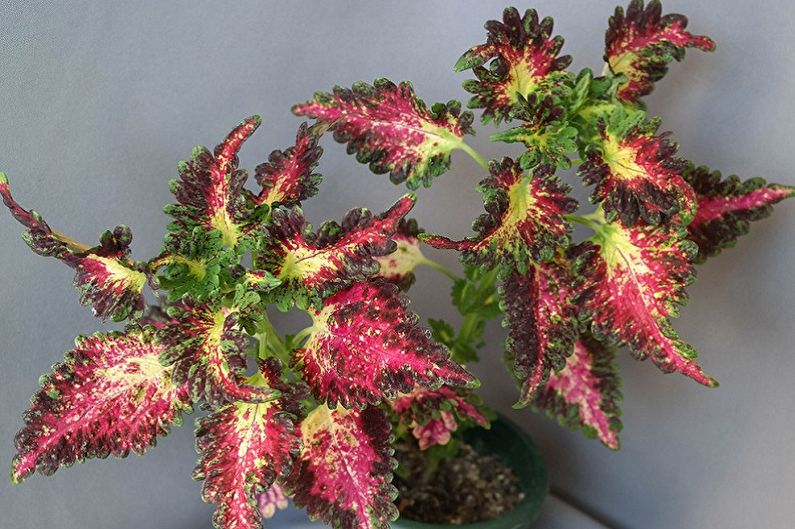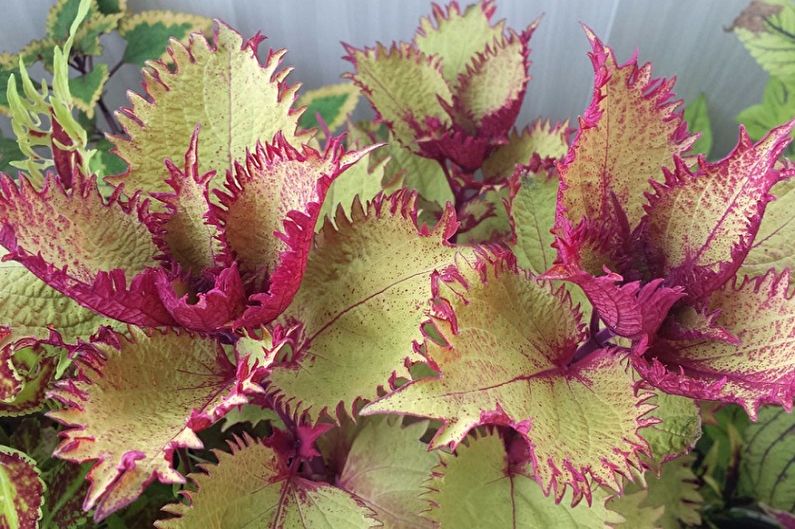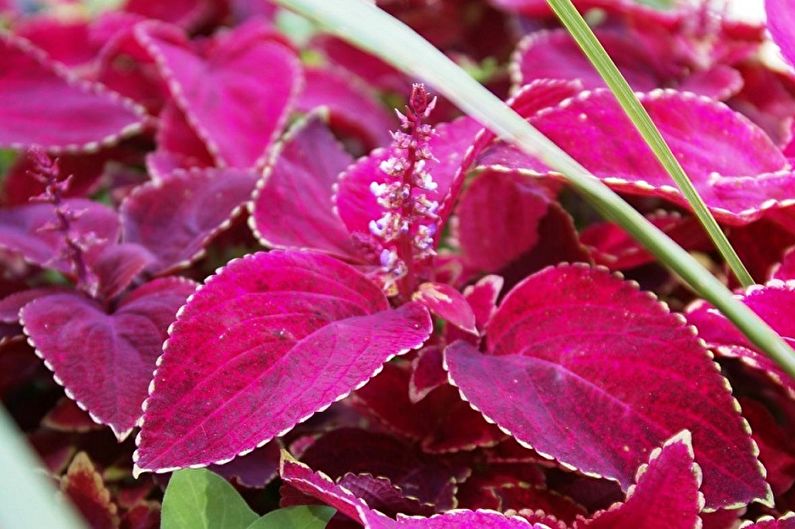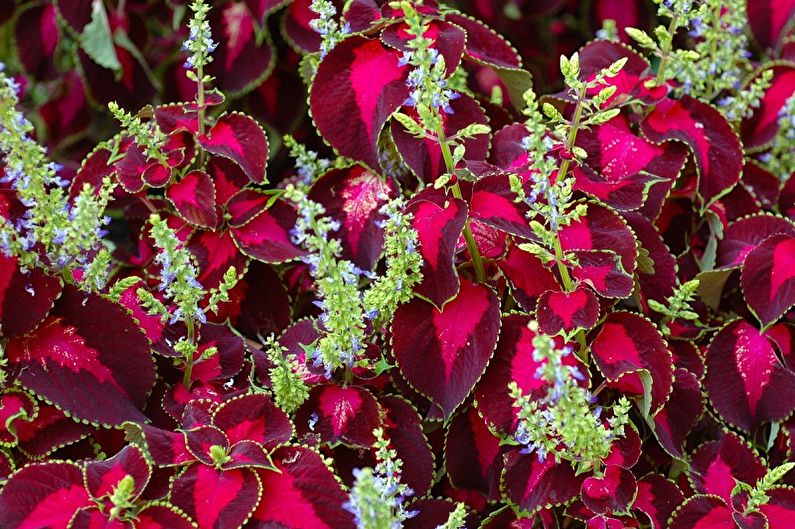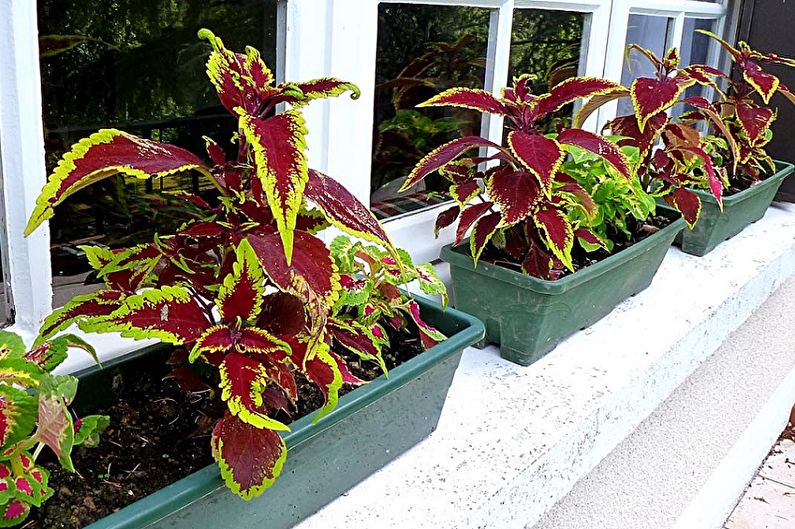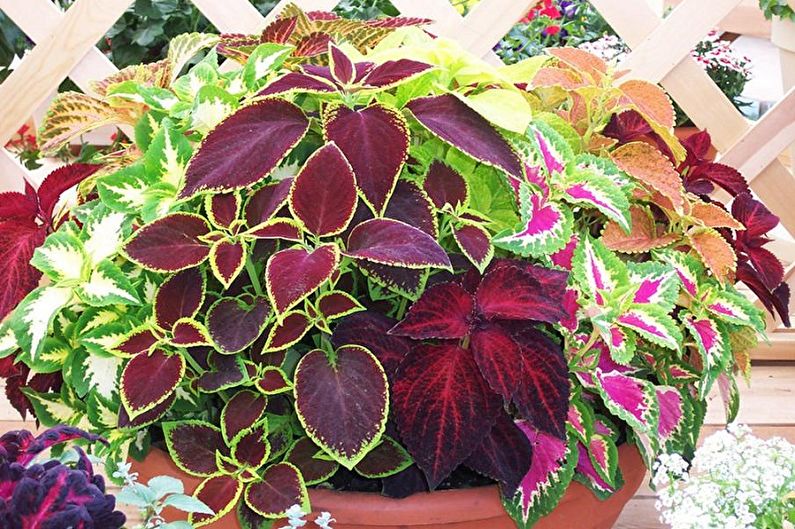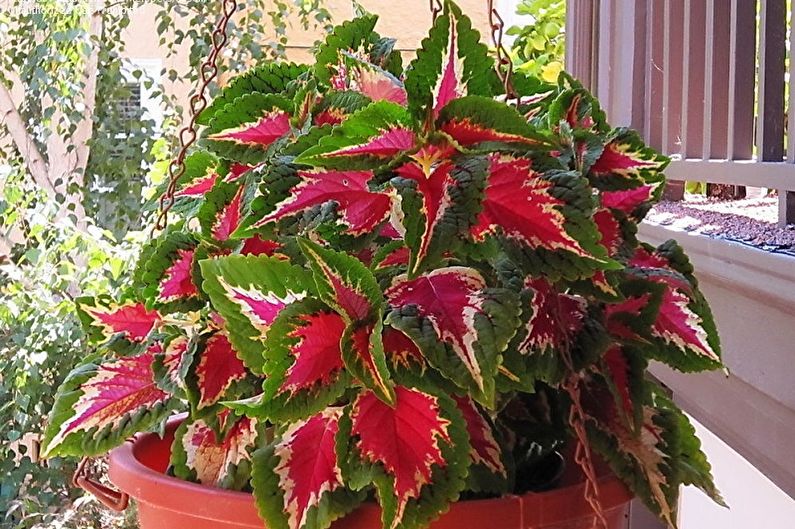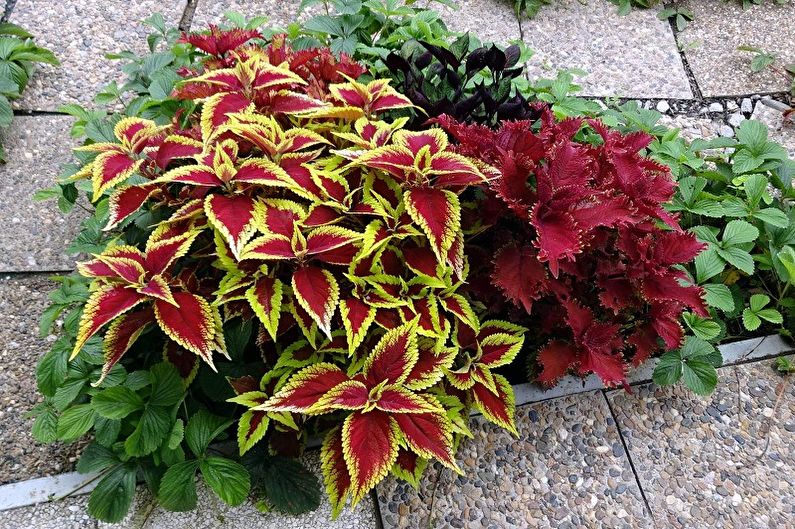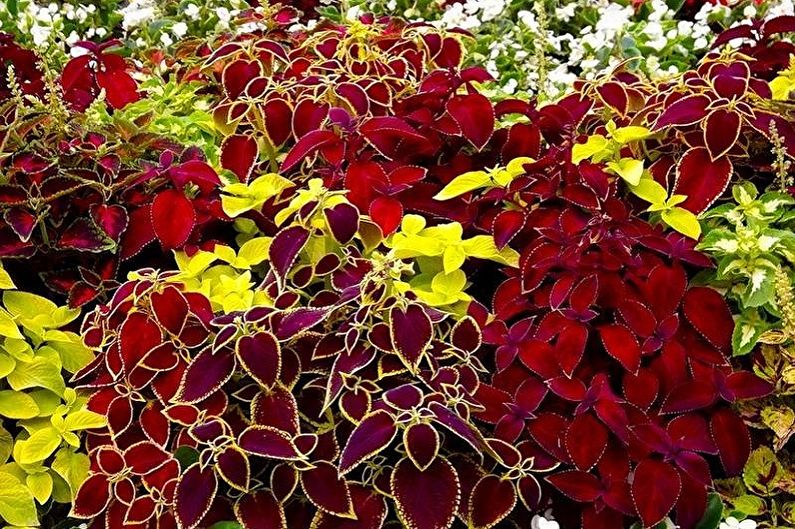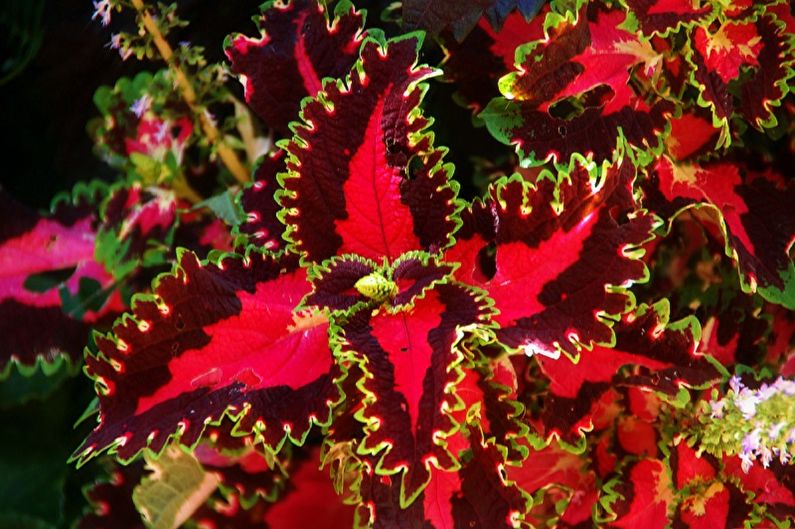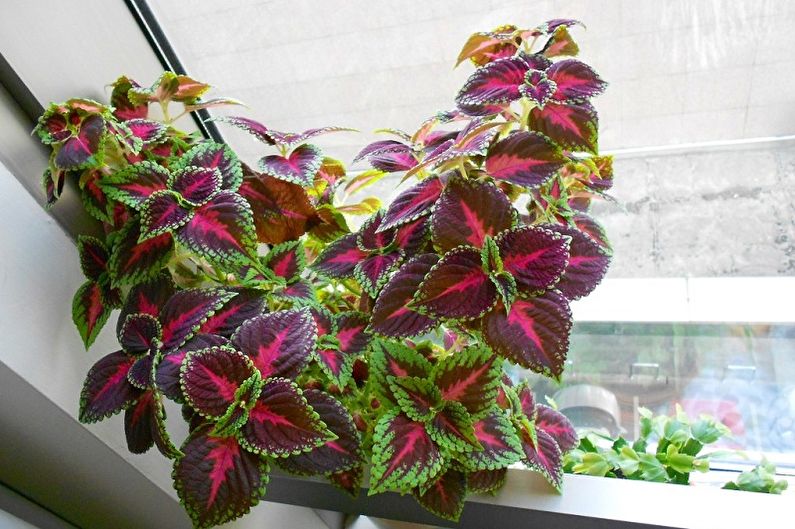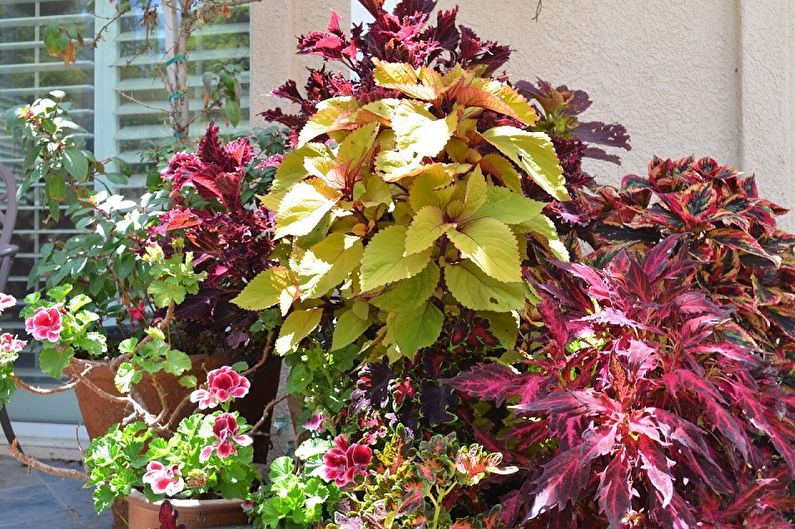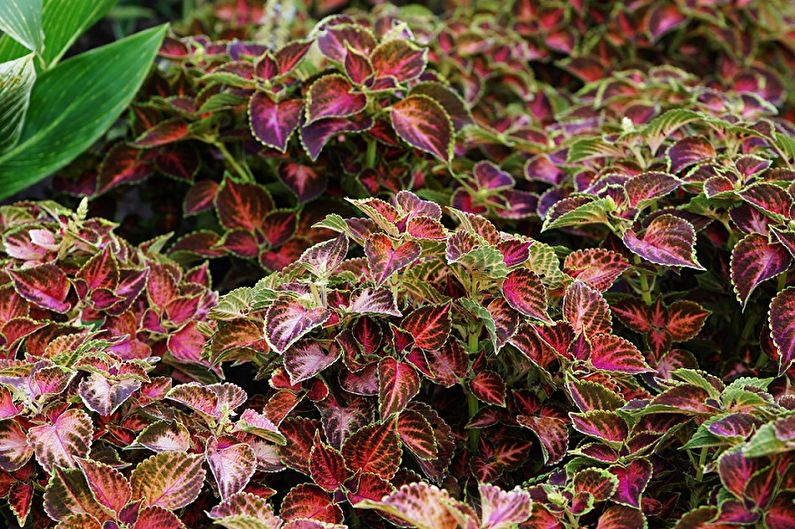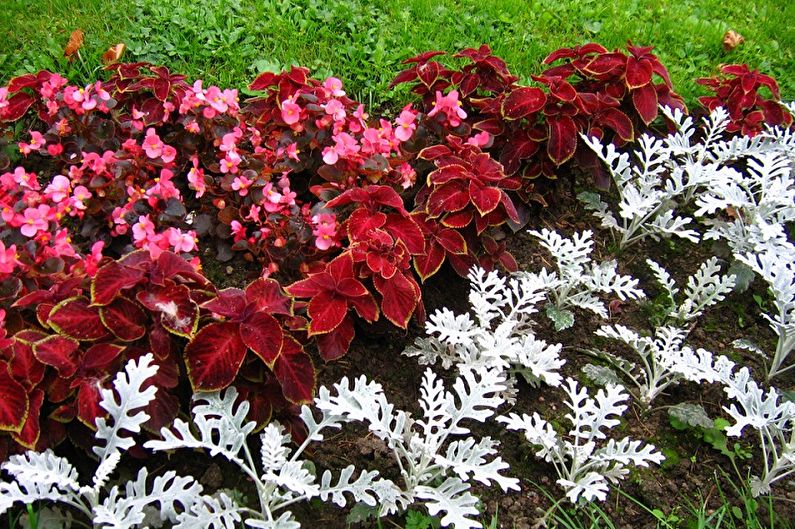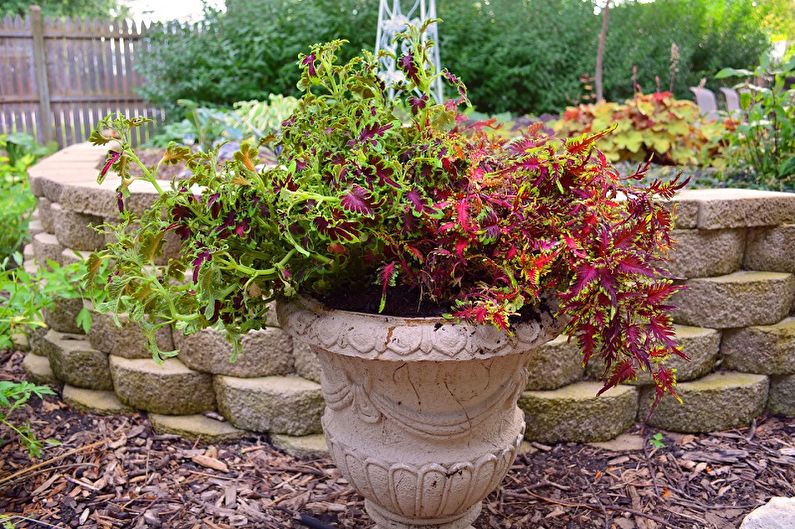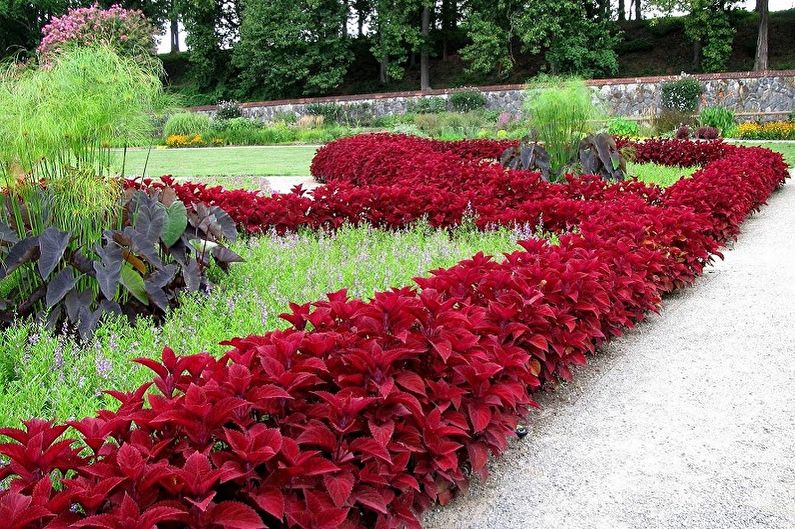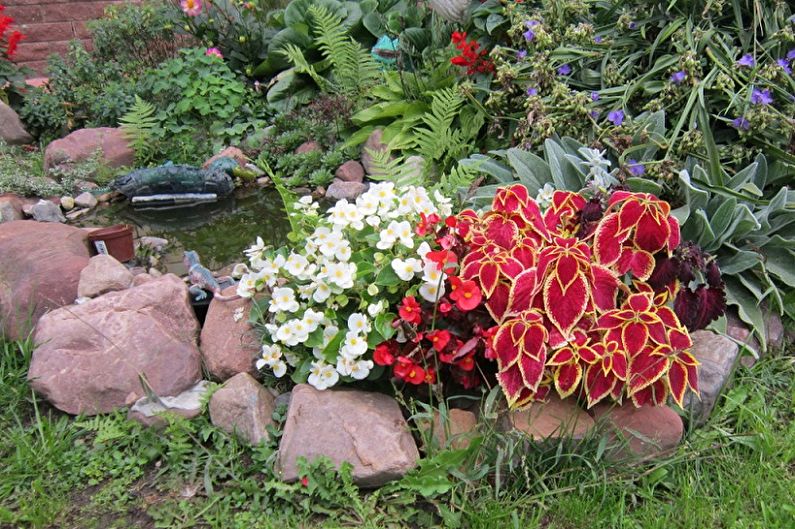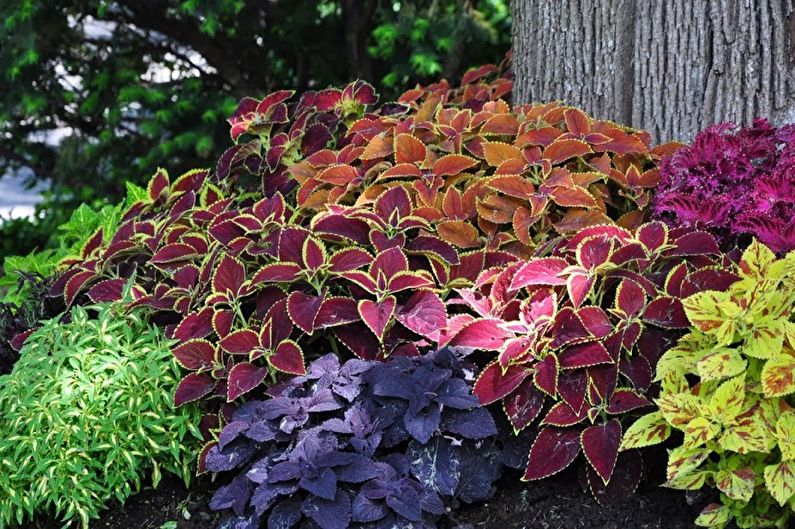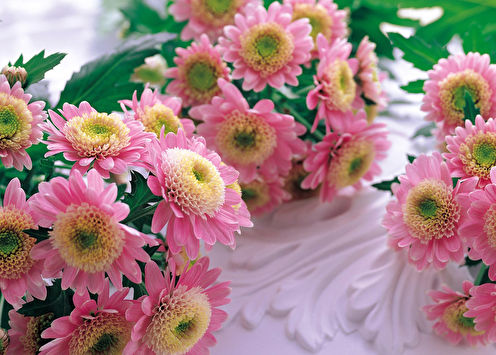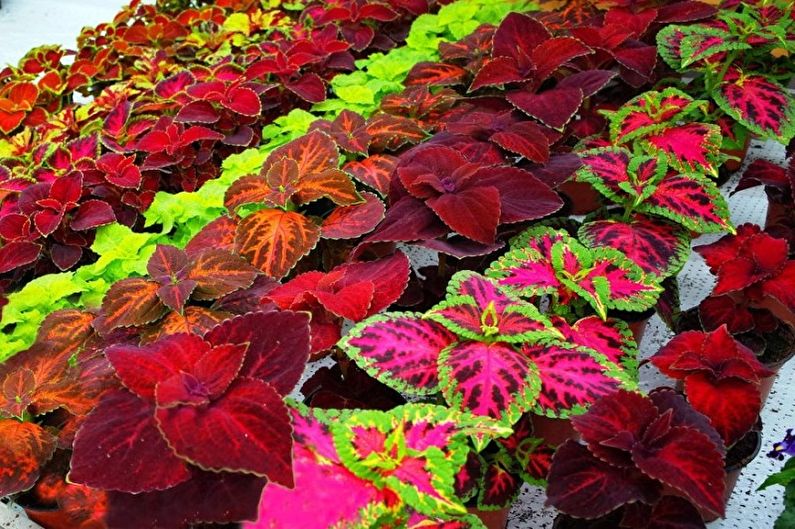
Coleus is a bright and unusual plant, which in life was dubbed “nettle” for the characteristic shape of large leaves. It is unpretentious and elegant, equally successfully grown in open ground and at home. Compact bushes have a variety of colors. Gardeners appreciate coleus for colorful and colorful leaves, unpretentiousness in care and intensive growth. Changing living conditions does not affect the state of the flower: it quickly adapts and continues to grow. Even it reproduces easily and quickly. This does not require special skills.
General characteristics
Coleus grows in tropical regions. In nature, it can be one or many years. In everyday life, adapted polyhybrid varieties are usually bred.
Another coleus nickname is the “croton of the poor.” This is due to the characteristic color of velvet leaves, able to compete with the capricious and noble codium. The word "coleus" itself means a case or scabbard. This is a reference to the characteristic appearance of stamen filaments fused into a case.
In nature, coleus feels excellent in Asian and African forests. Aborigines consume individual wild varieties as food, although this does not apply to domestic hybrids, which are mainly valuable for beauty.
Wild coleuses are shrubs up to 50 cm tall. Leaves can be of any shades and with different patterns, with edging, dots, spots, stripes or a marble pattern. Varieties in which several contrasting shades were mixed look interesting.
Although the plant also blooms, the main value is still represented by its leaves, rather than miniature and inconspicuous flowers.
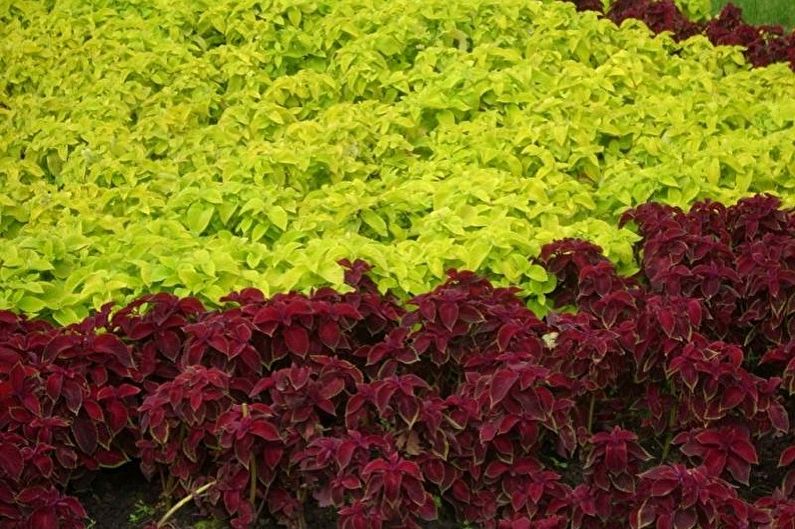
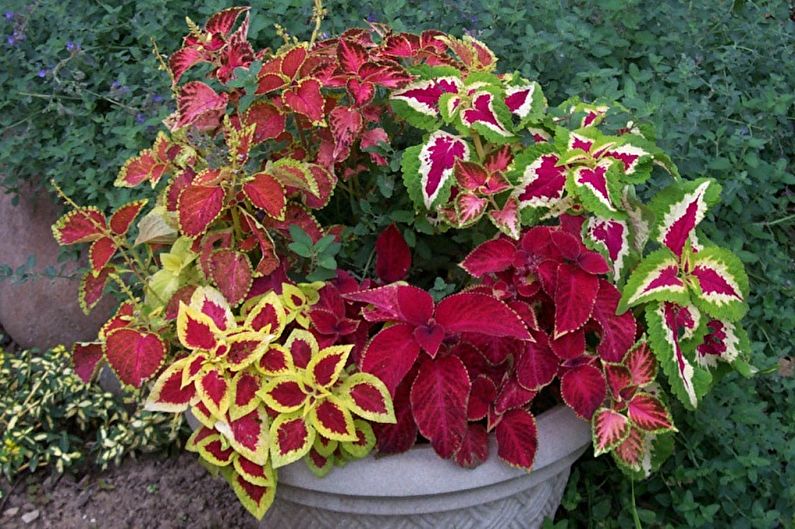
Coleus species
Hundreds of varieties of coleus are counted. Many of them successfully breed at home and in the garden. Here are just a few options:
Coleus Blum - the progenitor of many modern decorative varieties. Breeders brought him under the leadership of the botanist Karl Blum. Now this view covers the richest and most diverse color palette.
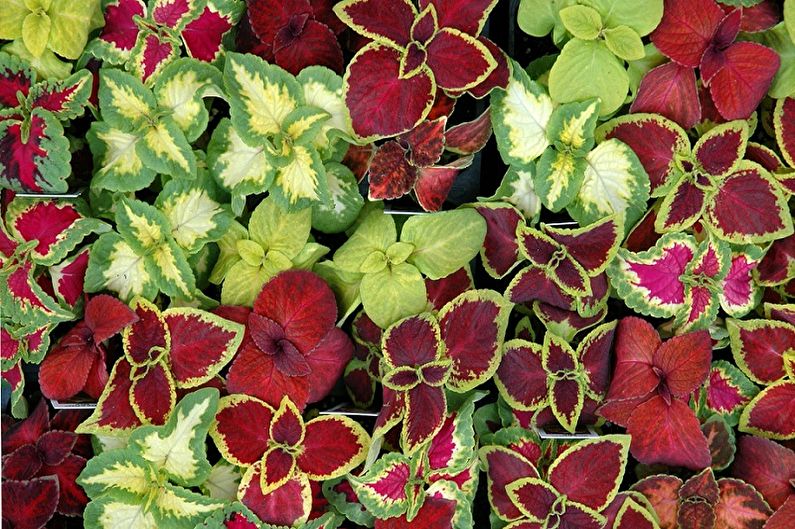
Coleus Renelt - one of the most popular varieties. Its feature is matte saturated red leaves with a creamy green fringing.
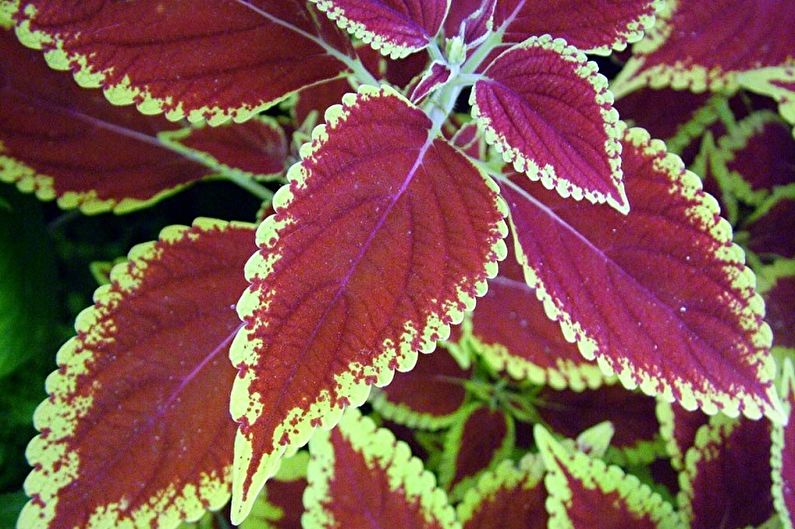
Coleus Kong grows quickly and densely overgrown with large leaves. For this, he got his name. Over time, the height and width of the crown can become equal.
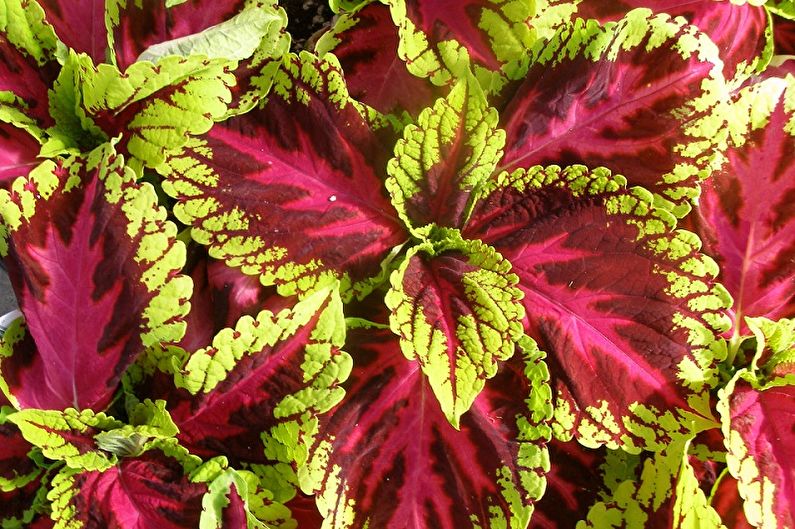
Coleus Sabre - the opposite of Kong. This is a dwarf variety, so its height almost never exceeds 17–20 cm.
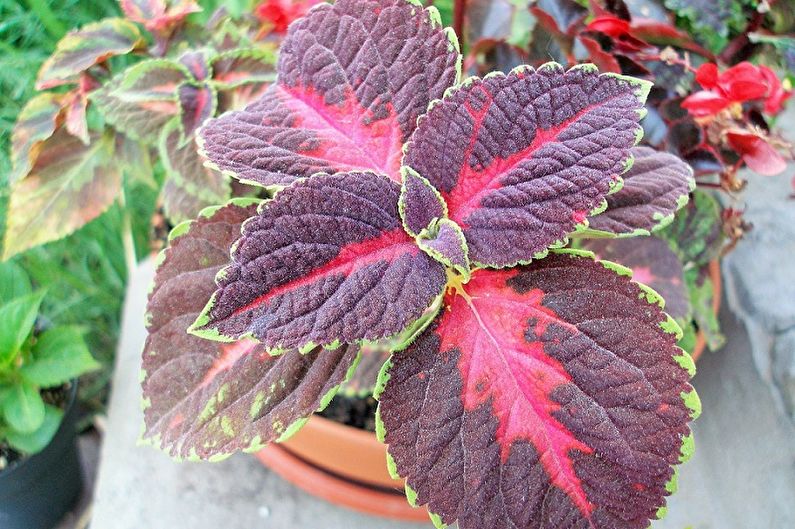
Coleus Buttercup - Another tall shrub that grows to 50 cm. Leaves pastel salad, and sometimes a white shade.
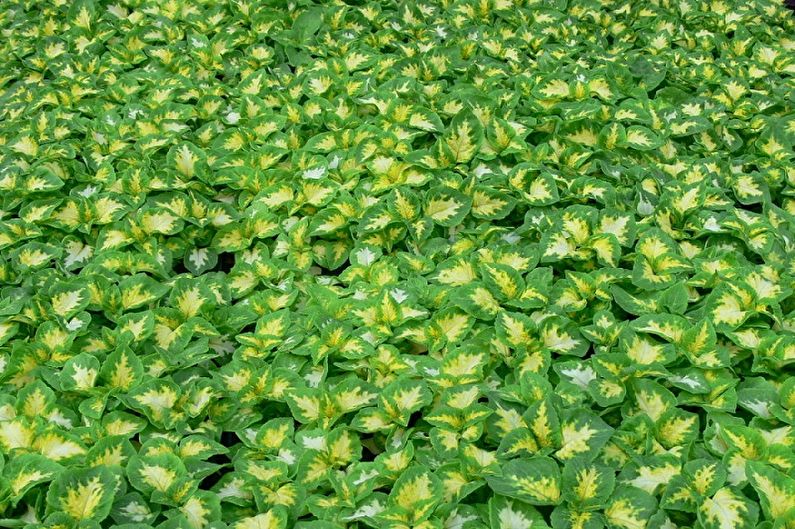
Coleus Pumila - ampelous plant with lying stems. Thanks to the correct formation of a lush shrub, you can give any appearance.
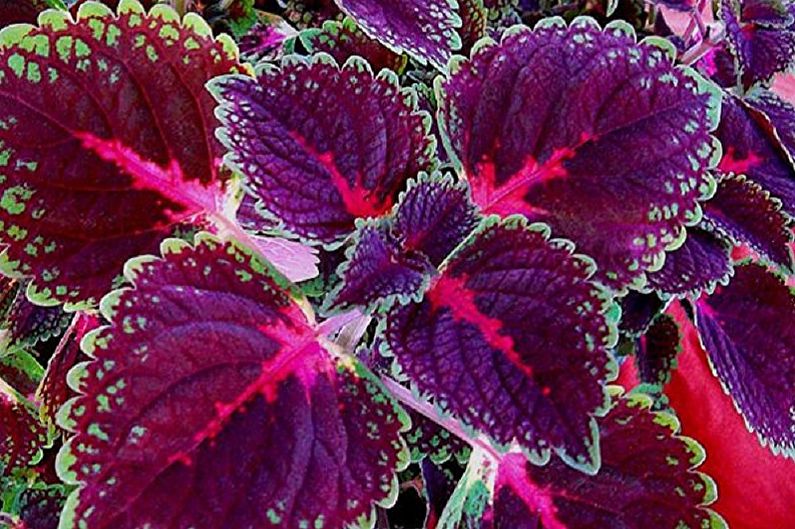
Coleus Diamond - a small decorative variety with lemon and red with the same small leaves.
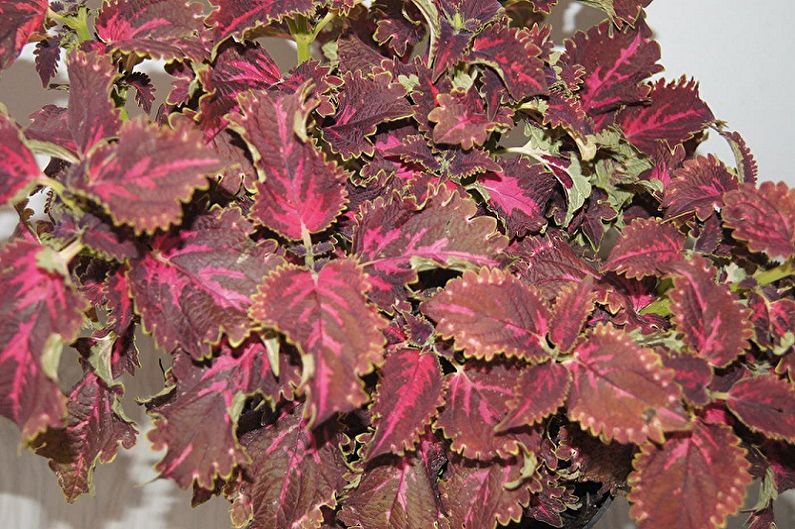
Rose blush - a highly branched variety, the "chip" of which is in large corrugated leaves. The dominant shade is light pink, with a salad fringing.
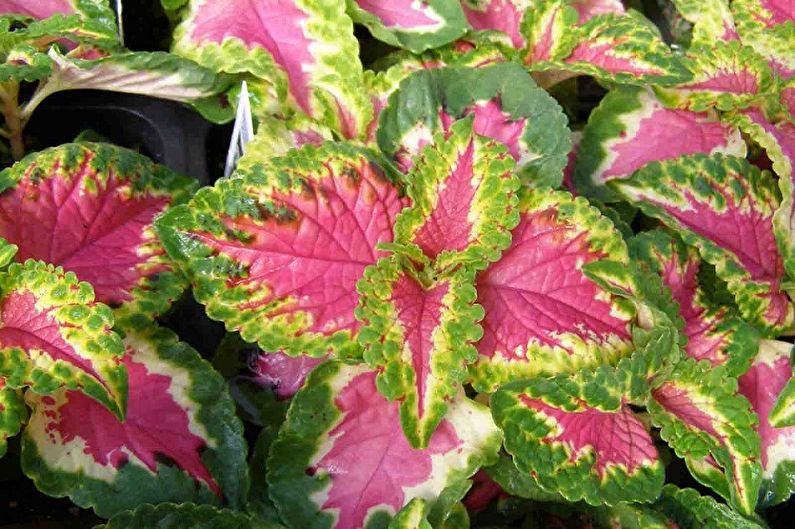
Coleus Mosaic - This is a type of coloring, suggesting striped-spotted leaves. Primary colors are green, cream and red.
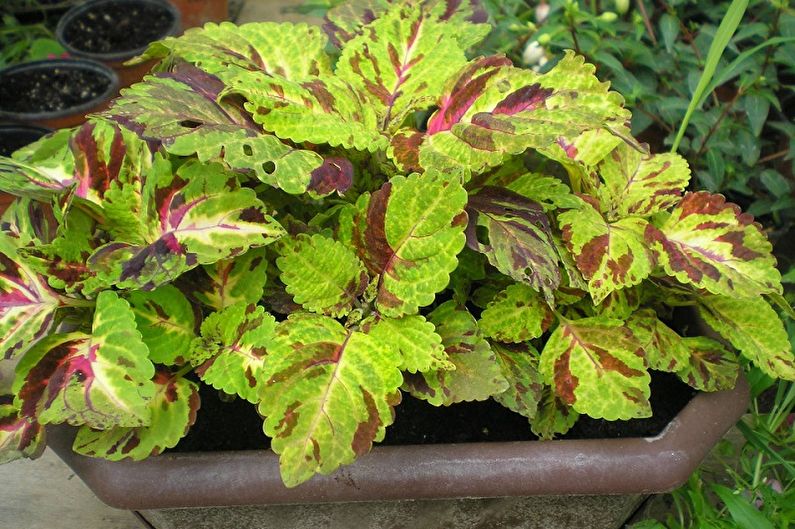
Coleus Butterfly resembles a butterfly wing. He has a wavy border on the sheet plate.
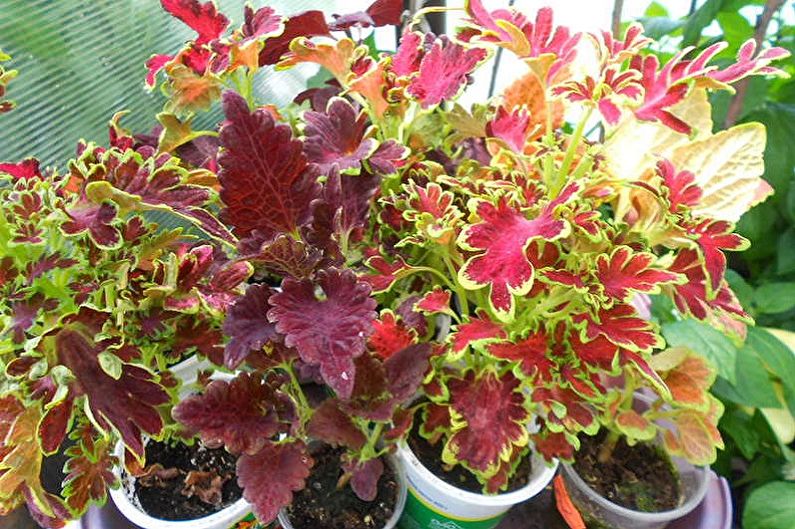
Coleus Care
Care for coleus is quite simple, if simple conditions are met:
Optimum soil is a mixture based on sheet or turf soil. You can use ordinary garden soil, but first you need to disinfect and knead it with peat and humus. Sand is used for loosening. Watch the acidity of the soil. If its pH exceeds 7, it will be critical for coleus. You can dilute such a mixture with ordinary ash.
Top dressing is needed to stimulate the growth and brightness of the leaves. In summer, use potash mineral fertilizers.It is important that the solution is not too concentrated. On a regular basis, feel free to add some ash to the water. This simultaneously regulates the characteristics of the soil. The first top dressing is about a month after the transplant, when the coleus adapts to new conditions. Previously, you can damage and burn sensitive leaves. If you alternate mineral salts and organics, the first result will soon be felt.
Bright and colorful plants always love light. Without it, the leaves fade and fade. Under natural conditions, this can be observed in winter. By the way, it is the motley color that protects the sun-loving sheets from ultraviolet radiation. But in the midst of summer, take care of light partial shade, so as not to burn a delicate plant, especially through glass.
Coleus needs warmth. Critical temperature is considered to + 16 ... + 18C - this is a winter minimum. If it falls even lower, the leaves will fall, and sometimes you can completely lose the flower. Moreover, the risk of soil waterlogging increases. Ideal temperature + 20 ... + 25C. Minor and short fluctuations do not affect the condition of the coleus.
During the entire warm season, starting in spring, the Coleus needs to be watered abundantly. But use only the defended soft water and watch the moisture of the rhizome. This will help prevent rot and fungal infections. Add water as the topsoil dries.
To maintain optimum moisture, periodically spray the leaves with water from a fine spray. This is especially important in hot and dry seasons. Otherwise, they fade, cease to be elastic and begin to fall. But remember that excessively intense moisture affects the flower worse than short-term drought. It is also not necessary to wipe velvety leaves with a rag - this way they are easily damaged.
After winter, it's time to cut the coleus. Elongated shoots can be safely cut to 5-7 leaf ovaries. So the plant will again begin to grow actively. Cut shoots can be used for propagation. To improve decorative qualities, periodically pinch the growing stems.
Coleus peduncles are most often removed, because its decorative value is in foliage, not flowering. Leaving them for a longer period is only necessary when you need to collect your own seeds.
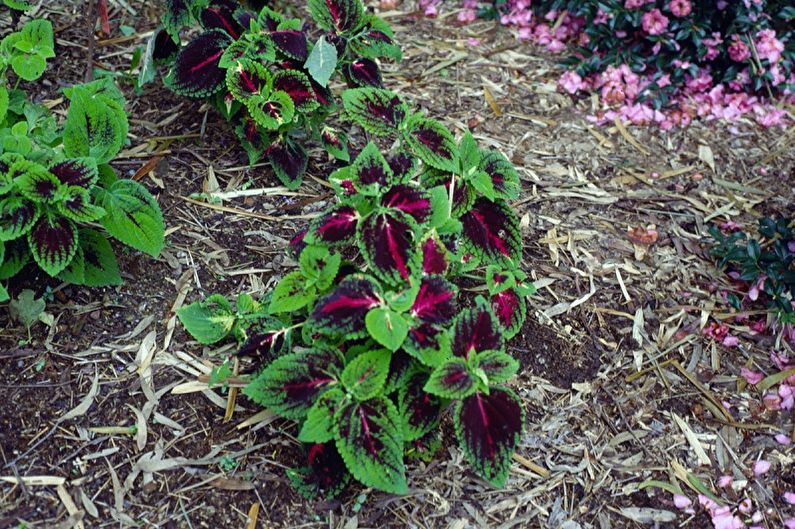
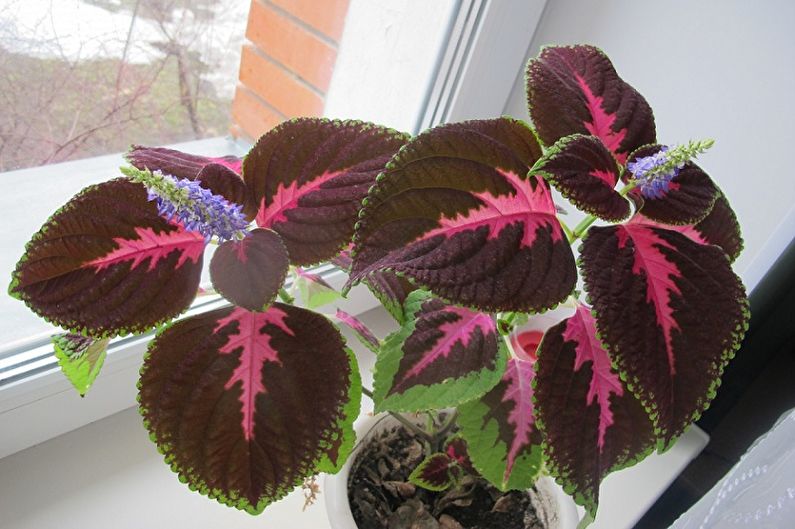
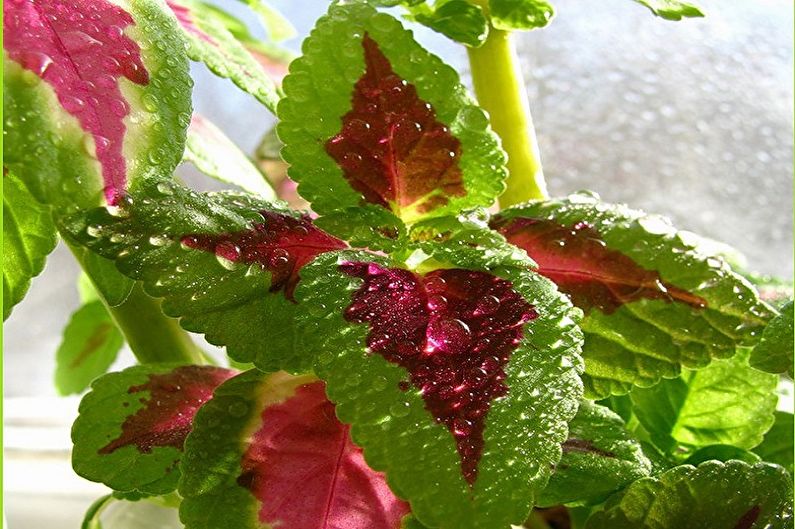
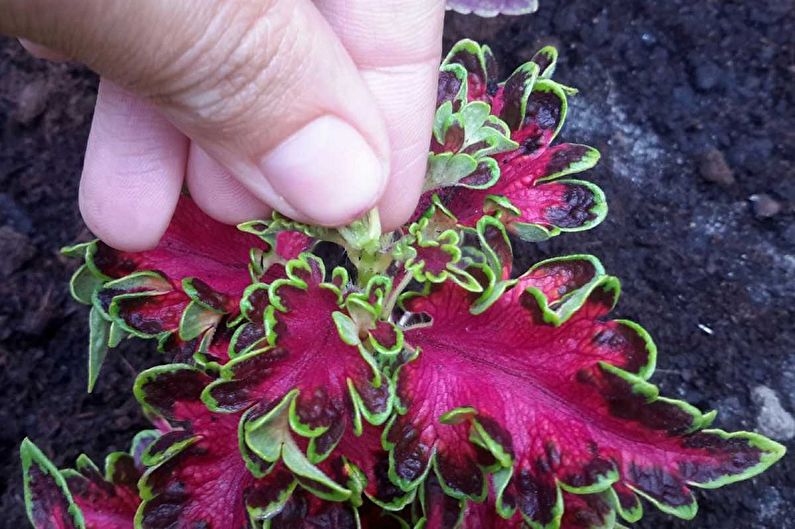
Transplantation and reproduction
Coleus propagated by seeds or stem cuttings. The first method is often used by breeders and experienced growers, but the second is available to everyone.
Cut young cuttings and place them in water. Within 7-10 days, the first roots appear, which quickly grow. After this, the plant can be rooted. Most conveniently - coarse-grained loose soil, such as vermiculite or sand. A hydrogel is also used. You can engage in seedlings at any time of the year. Due to weather conditions, only the end of autumn and the beginning of winter are not recommended.
With a favorable temperature-humidity regime, the coleus survives almost always. He is as unpretentious as possible. Cuttings are planted in small flowerpots up to 9 cm in diameter. Then they need light and moisture. Pinch the tops regularly so that new shoots appear.
The ideal time for coleus transplantation is spring, but if necessary, you can do this at the end of winter. It is advisable to do this at least once a year by the method of transshipment - this is less traumatic for the plant. Cylindrical flowerpots or tulip pots made of plastic and ceramic are best suited.
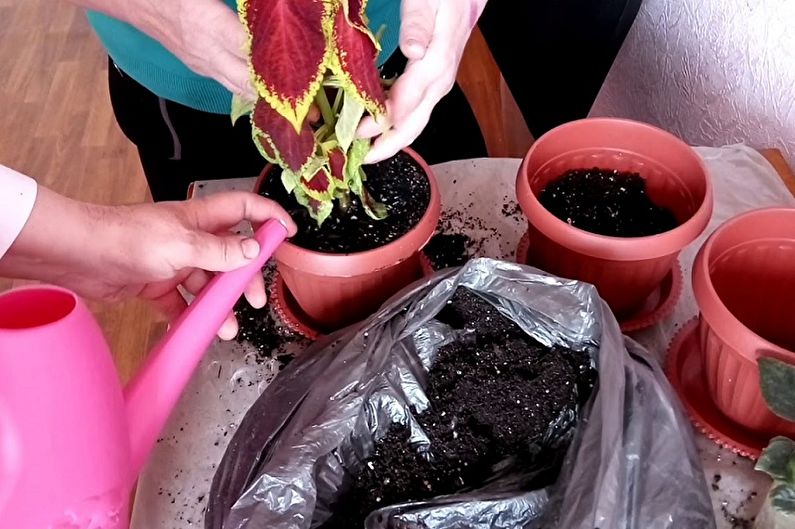
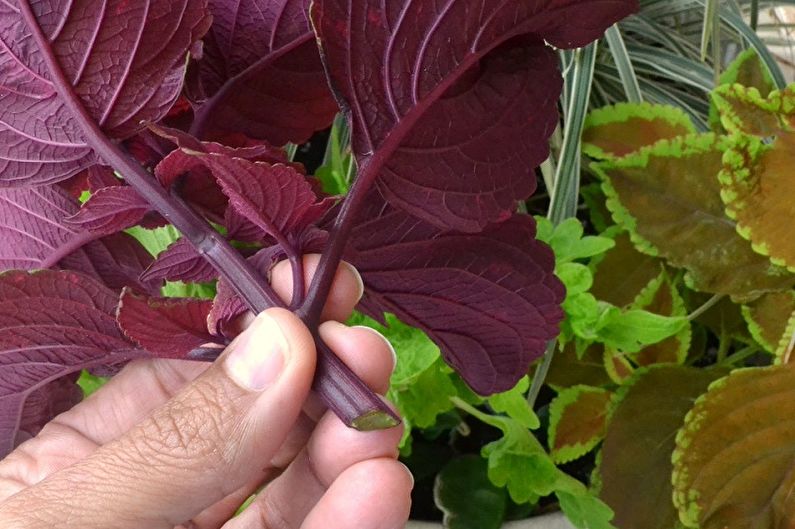
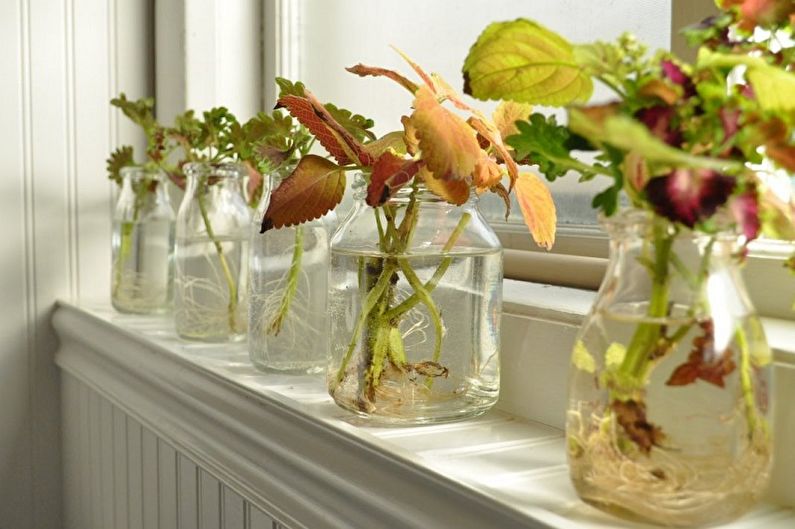
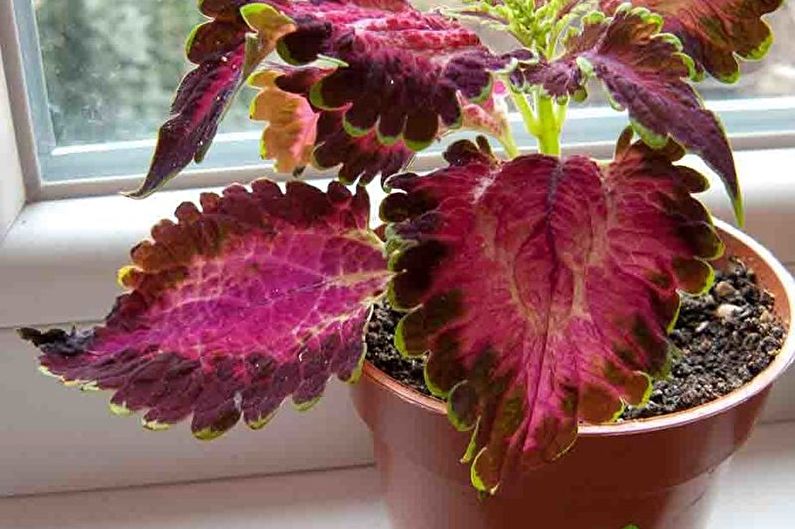
Pest and Disease Control
Coleus loves heat, but does not tolerate dryness and lack of oxygen. Closely monitor his condition. At the first sign of wilting, immediately adjust the care. Most often, the reason is overheating in the summer and lack of light in the winter. If the sun is not enough, special artificial lamps are used. In summer, it is better to keep the flower on the balcony or porch to ensure a constant flow of air.
The main threat to coleus is the spider mite. Less commonly, it affects the scab, aphid and whitefly.These parasites can even get on a houseplant if transferred from open ground. Therefore, when transplanting, always observe the quarantine and process the flowers with insecticides several times so that other flowerpots do not suffer.
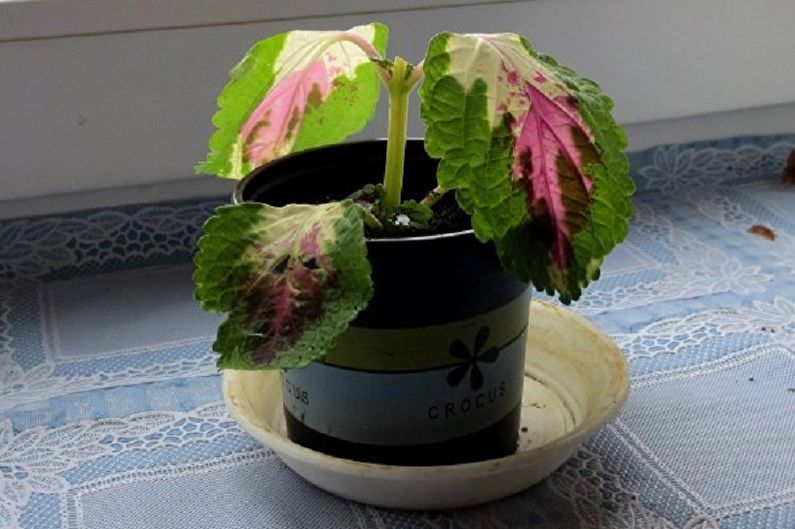

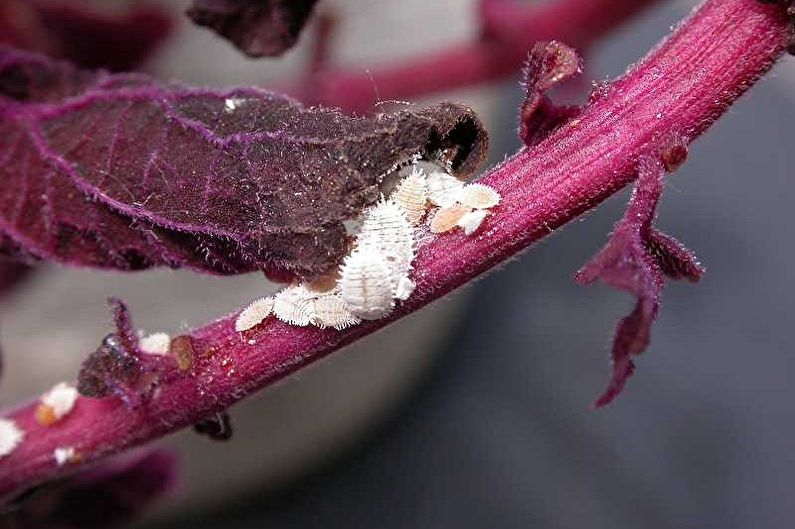
Coleus - photo
Good seedlings are not only healthy, but also beautiful! Therefore, we have put together a selection of cooleus photos so you can get new ideas and get inspired. Enjoy watching!
